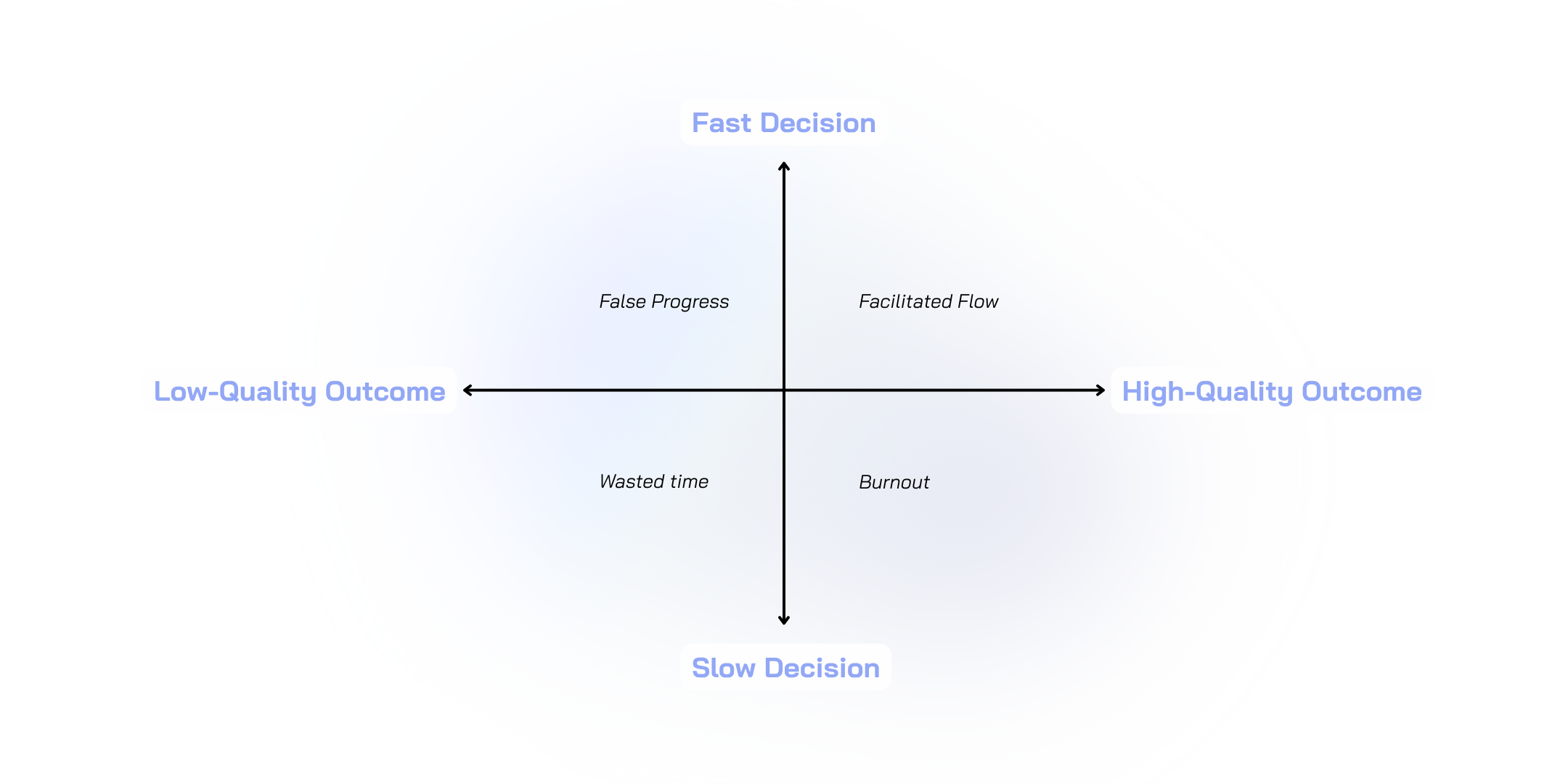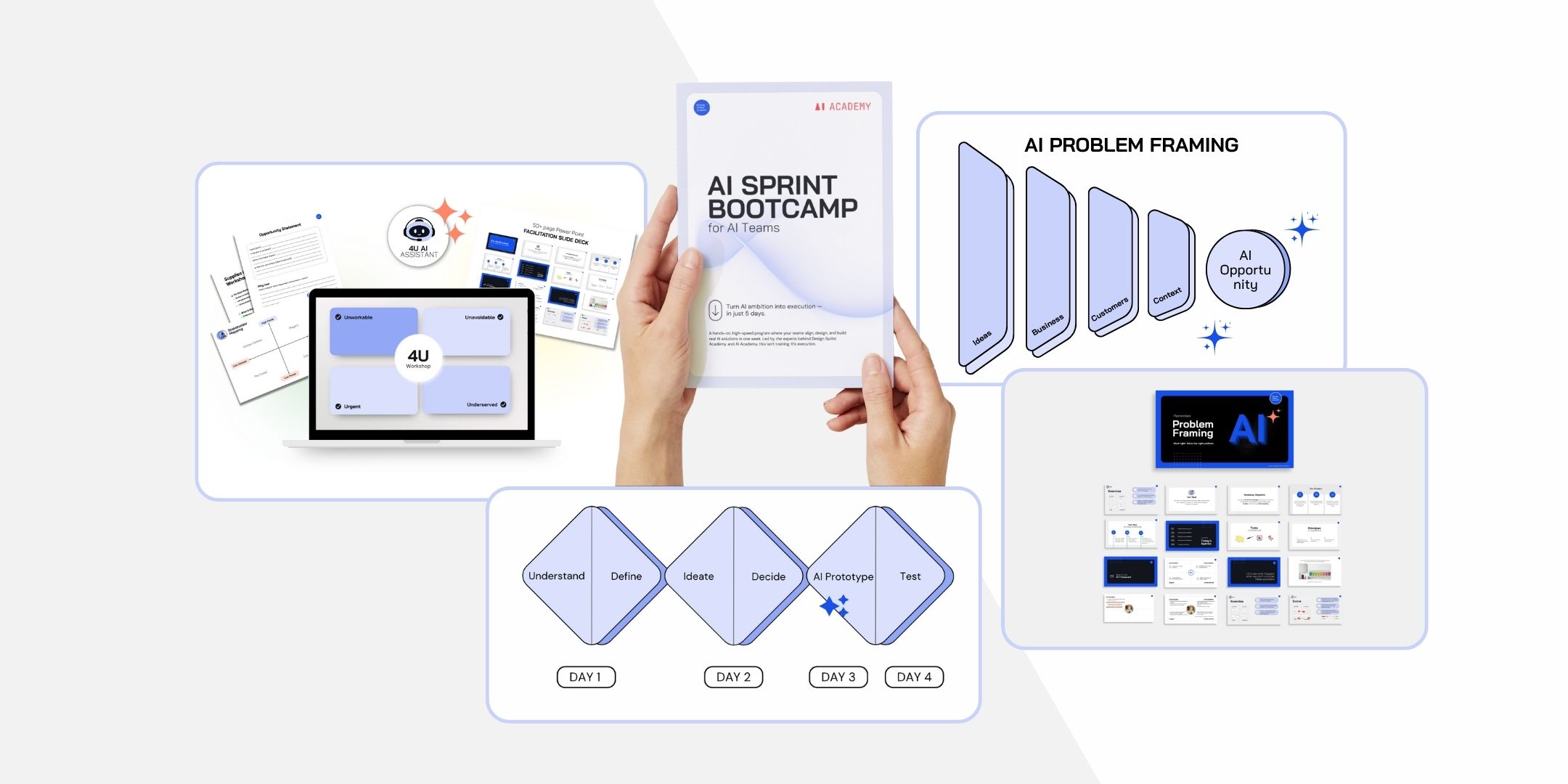A Design Sprint is an Emotional Rollercoaster: Master Team Engagement Like a Pro Facilitator

In today’s fast-paced world, we're constantly bombarded with information, making it increasingly difficult to maintain focus. The average human attention span has dropped from 12 to just 8 seconds over the past 18 years, largely due to the internet and modern technologies like smartphones and video games. This decrease in attention span poses a unique challenge, especially in settings that require sustained engagement, such as a week-long Design Sprint workshop.
Maintaining team engagement in these sprints, particularly in a remote setting, is crucial yet challenging. Ensuring that each team member understands the sprint’s challenges, expected outcomes, and their roles is foundational to their success.
In traditional, in-person sprints, facilitators rely on various strategies to keep teams engaged: explaining the purpose behind each task to gain buy-in, observing emotional responses, and demonstrating empathy. Facilitators can also use their energy and presence to uplift the group during challenging moments.
However, remote sprints make it harder to pick up on non-verbal cues and to energize a team in the same way. That's why a different approach is necessary to maintain engagement in virtual settings.
The Emotional Rollercoaster -A Tool for Team Engagement
To tackle this challenge, we developed the Emotional Rollercoaster, a tool specifically designed for design sprints. This tool helps facilitators gauge the emotional state of the team and adjust their approach accordingly. Essentially, it’s a tool for empathy, providing a structure to understand and respond to the team's emotional journey during the sprint.
The Emotional Rollercoaster serves two primary purposes:
- It sets the right expectations for the team.
- It helps facilitators assess the team's emotional health and level of engagement, enabling them to adapt their facilitation style in real-time.
When to use the Emotional Rollercoaster?
1. Before the Sprint: Managing Expectations
During the preparatory phase of a design sprint, introduce the Emotional Rollercoaster to the team. At the Design Sprint Academy, for example, we hold a one-hour onboarding session a week before the sprint. This session isn’t just about logistics; it’s an opportunity to align the team's expectations and prepare them emotionally for the journey ahead. By explaining the typical emotional arc of a sprint, you reduce ambiguity, foster a safe environment, and build trust in you as the facilitator.
2. During the Sprint: Diagnosing Emotional Health
Throughout the sprint, the Emotional Rollercoaster becomes an essential tool for diagnosing the team's emotional health. After each exercise, encourage team members to express how they feel. Neuroscience supports this approach: labeling emotions can create mental distance from negative feelings, helping to reduce their impact. By acknowledging these emotions, the team can lower stress and remain more focused.
Using the Emotional Rollercoaster template, facilitators can identify emotional highs and lows and determine the best interventions, such as taking a break, reiterating the purpose of an exercise, injecting energy into the session, or showing empathy. This informed approach enhances the likelihood of a successful sprint.

The Emotional Rollercoaster Breakdown: What to Expect Each Day
Day 1: Excitement to Alignment
- Morning: The team is excited and eager to begin, full of energy.
- Midday: As they dive into the problem, uncertainty creeps in. The challenge seems complex, leading to doubts and confusion.
- Afternoon: The team finds common ground and aligns on goals, bringing a sense of unity and direction.
Day 2: Creative Energy to Frustration
- Morning: A burst of creativity flows as the team engages in idea generation activities.
- Midday: Tensions rise during Solution Sketching, as brainstorming under time pressure can be stressful.
- Afternoon: Frustration may emerge during Storyboarding, especially when debates arise over which ideas to keep.
Day 3: Focused Stress to Relief
- Morning: The team is energized as they begin building the prototype.
- Midday: Focused but stressed, the team works through challenges as the deadline looms.
- Afternoon: Relief comes as the prototype is completed, and the team feels a sense of accomplishment.
Day 4: Tension to Clarity
- Morning: Anticipation and nervousness fill the air as the team prepares for user testing.
- During Testing: They observe users with mixed emotions, processing the feedback.
- End of Day: Clarity sets in as the team analyzes feedback, gaining insights for future improvements.

Conclusion
Design Sprint Facilitators who focus not only on the technical aspects of the sprint but also on the emotional journey of the participants can foster a more engaged, creative, and productive environment. By using tools like the Emotional Rollercoaster, you can enhance the quality of both the sprint outcomes and the team’s overall experience.









